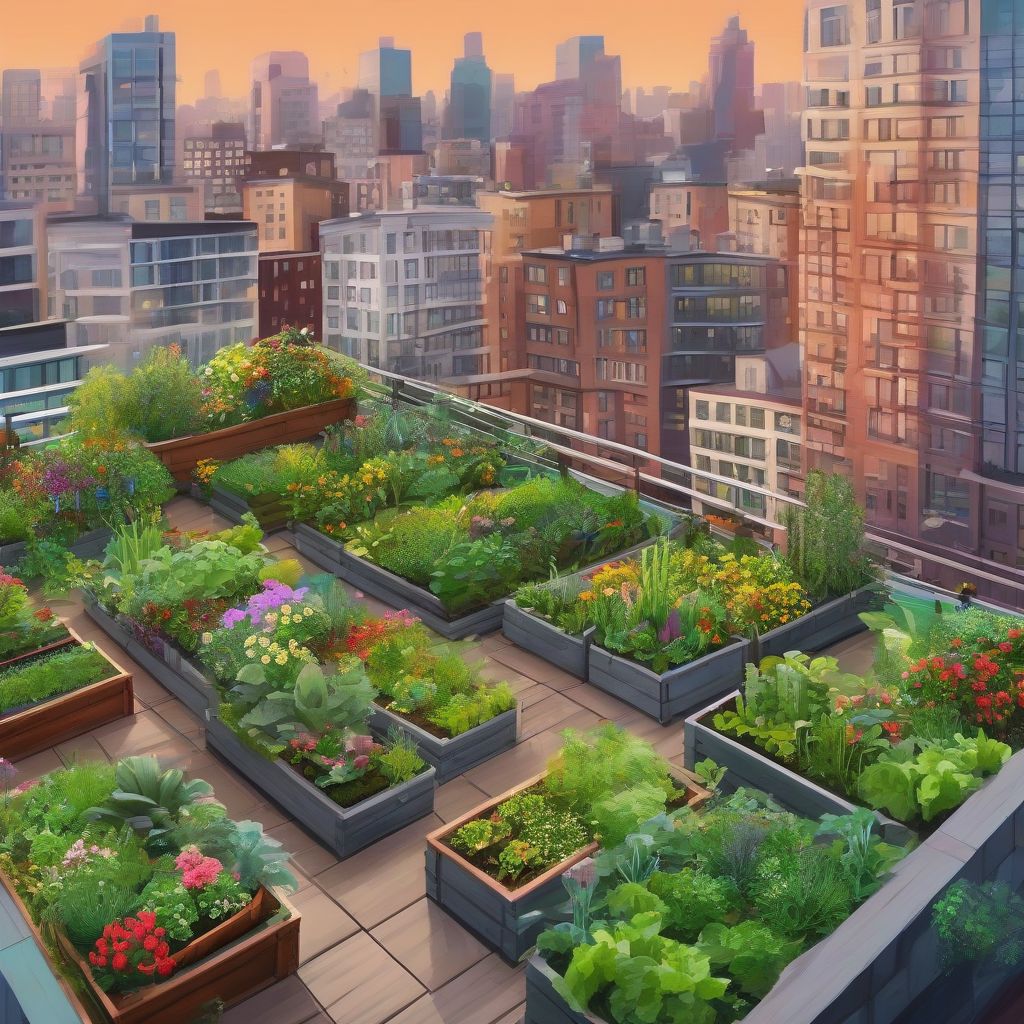Have you ever dreamt of plucking a sun-ripened tomato from your own vine, right in the heart of the city? It might seem like a distant dream amidst the concrete jungle, but urban gardening is transforming the way we think about food, sustainability, and city living. More than just a hobby, urban gardening is blossoming into a powerful movement, playing a crucial role in creating more sustainable and resilient cities.
Reconnecting with Nature and Our Food
In today’s fast-paced urban life, it’s easy to feel disconnected from the natural world and the origins of our food. Urban gardening offers a refreshing antidote, bringing us closer to nature and fostering a deeper appreciation for where our food comes from. Imagine stepping out your door and harvesting fresh herbs for dinner or teaching your children how to nurture a tiny seed into a vibrant plant. Urban gardening allows us to reconnect with the natural cycles of growth and experience the satisfaction of growing our own food, however small the yield.
The Environmental Impact: Sowing Seeds for a Greener City
 Urban Garden on Rooftop
Urban Garden on Rooftop
[amazon bestseller=”urban gardening”]
Beyond the personal benefits, urban gardening plays a significant role in mitigating the environmental challenges faced by cities. Here’s how:
Reducing Our Carbon Footprint
The journey of our food from farm to table often spans thousands of miles, contributing significantly to greenhouse gas emissions. Urban gardening helps reduce this “food mileage” by bringing food production closer to our plates. By growing our own produce, we’re minimizing transportation emissions and supporting a more sustainable food system.
Creating Green Spaces and Combating the Urban Heat Island Effect
Cities, with their vast expanses of concrete and asphalt, tend to absorb and retain heat, creating what’s known as the “urban heat island effect.” Urban gardens, particularly green roofs and vertical gardens, act as natural cooling systems. They absorb sunlight, reduce ambient temperatures, and improve air quality, making our cities more livable and resilient to climate change.
Promoting Biodiversity and Supporting Local Ecosystems
Urban gardens can become havens for pollinators like bees and butterflies, which are essential for a healthy ecosystem but often struggle to survive in urban environments. By incorporating native plants and creating pollinator-friendly spaces, urban gardeners can contribute to urban biodiversity and support the delicate balance of nature.
From Individual Efforts to Community Action: The Power of Collective Growth
While individual urban gardens make a difference, community gardens take sustainable living to a whole new level. These collaborative spaces bring people together, fostering a sense of community while providing access to fresh, affordable produce for everyone, regardless of their socioeconomic background.
Building Stronger Communities
Community gardens are more than just places to grow food; they are social hubs that bring people from all walks of life together. They provide opportunities for learning, sharing knowledge, and building relationships, strengthening the social fabric of our communities. As people work side-by-side, tending to their plots and sharing their harvests, they build connections, fostering a sense of belonging and shared purpose.
Increasing Food Access and Security
For many low-income communities in urban areas, access to fresh, nutritious food can be a challenge. Community gardens can play a vital role in addressing food insecurity by providing residents with the means to grow their own produce. This access to fresh food not only improves diets but also empowers communities by giving them more control over their food sources.
Tips for Embracing Urban Gardening
Ready to dig in and experience the transformative power of urban gardening? Here are a few tips to get you started:
-
Start Small: You don’t need a sprawling backyard to create a thriving urban garden. A windowsill, balcony, or even a fire escape can be transformed into a productive space.
-
Choose the Right Plants: Opt for varieties that are well-suited to your climate and available space. Compact vegetables, herbs, and vertically growing plants are excellent choices for urban settings.
-
Explore Different Gardening Methods: Raised beds, container gardening, vertical gardens, and hydroponics offer creative solutions for urban spaces with limited ground area.
-
Connect with Your Local Community: Join a community garden, attend workshops, or seek advice from experienced urban gardeners. You’ll be amazed by the wealth of knowledge and support within the urban gardening community.
Cultivating a Sustainable Future, One Seed at a Time
As the world becomes increasingly urbanized, urban gardening offers a powerful and accessible way to reconnect with nature, build stronger communities, and create more sustainable and resilient cities. It’s a testament to the fact that even in the most concrete-covered corners, the seeds of positive change can take root and flourish.
Let’s roll up our sleeves, grab our gardening gloves, and join the urban gardening movement. Together, we can transform our cities into vibrant, edible landscapes, one seed at a time.
